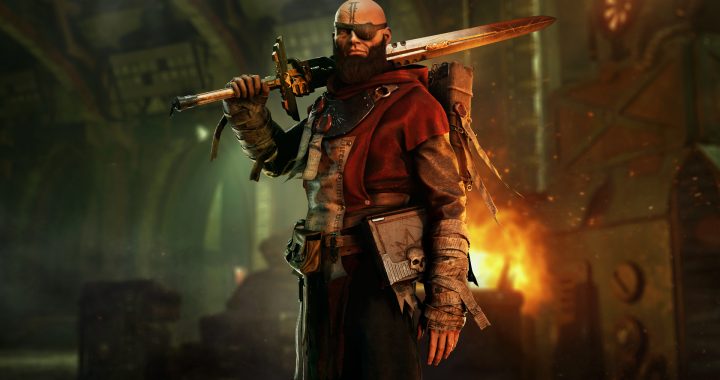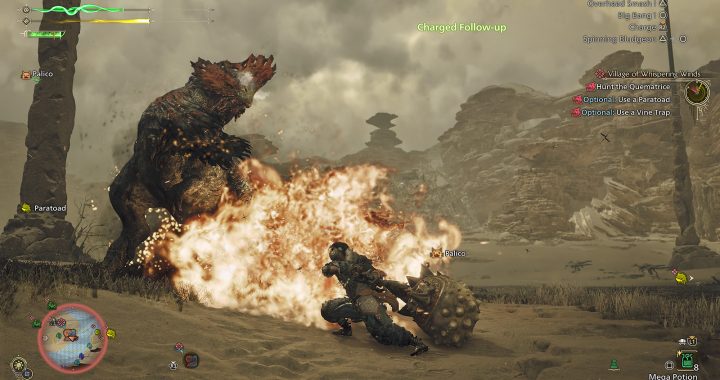Monster Hunter Wilds: Section 1 hands-on review

When Monster Hunter Wilds debuts on PlayStation 5 on February 28th, observe a crazy and unyielding new frontier. We recently completed Chapter 1’s key missions, encountering enormous foes, including the brand-new monster Quematrice, and head to the Scarlet Forest. In earlier line ‘ entries, several hunt-aiding skills were mostly granted through weapons, talismans, and decorations, which you combined to create your develop. Yet weapons that are already available in Monster Hunter Wilds have been equipped with Equipment Skills specifically designed for the tool type. For instance, Bone Blade II offers Focus and Attack Boost while Great Sword Buster Sword I has Vital Draw. When you bring both a fight and a ranged weapon, it’s easier to use both of these skills since this activity allows you to transfer between two during a chase.
The hunter, after escorting the sisters, encounters the Brute Wyvern, Quematrice. This dragon is a recent improvement to Monster Hunter Wilds. When the hunter is provoked, they likewise spread a volatile substance by dragging their long tails along the floor. The hunter is left in a Fireblight state as a result of being hit by this attack, which eventually reduces health over time. The huntert utilizes Nulberries or evades carefully as part of the second main mission’s attempt to deal with this condition.
Later in the pursuit, the hunters nose to the Scarlet Forest to evaluate Doshagumas. I was surprised that I had travel back to base on my Seikret all the way from the plains to the jungle. The change between areas was simple and there were no loading screens, which demonstrates how incredibly diverse and interconnected the ecosystems are in this sport.
The Scarlet Forest is characterized by its distinctive red-colored waters and towering plants. Its environment offers a relaxing change of scenery in contrast to the sandy deserts and steep rocks of the Windward Plains. Along the way, I came across species that weren’t found in the Windward Plains and a Wudwuds, a Lynian tribe’s sanctuary. When the sport launches, I’m mainly excited to explore more of the Scarlet Forest.
The first big dragon you’ll encounter in the Scarlet Forest is the Temnoceran, Lala Barina. This monster can be seen from anywhere, whether it is hanging from trees or in the heat waiting to raid. When it unleashes dark spores on its target, it opens its thorax to expose red hair tufts reminiscent of blooming roses. Despite being immune to all seed attacks, getting strike could result in paralysis.
The second demon I encountered in the Scarlet Forest was the Pink Fur Beast, Congalala. This taloned beast has appeared in a number of other collection entries, including Monster Hunter World, which was previously unreleased. Its bright hair and, of course, the filthy fart assaults that can rob you of your status are its defining characteristics.
In addition to its diarrhea, Congalala unleashes strong belches, making its army of Stench-inflicting moves particularly difficult. When removing the sting during challenge, it’s a good idea to pack lots of Deodorants with you. Its sharp shoulder strikes, delivered with amazing dexterity for such a huge critter, also pack a blow. Additionally, it occasionally retreats into a group of smaller Congas and problems as a package.
The chase for the Uth Duna, a Leviathan that controls the Scarlet Forest as the primary prey, comes to an end in Chapter 1. This monster regularly employs water-based assaults that impose Waterblight, making endurance recovery more difficult. Its most incredible walk is a devastating system slam that hits the air, causing significant damage as well as falling significant trees in its path. When the Uth Duna unleashes this attack, it’s best to rely completely on evasion.
Uth Duna is a formidable adversary, but sadly, Olivia, a part of the Forbidden Lands Expedition Team, provides assistance during this goal. With Uth Duna’s attention divided, it becomes easier to launch attacks from the edges or back. Uth Duna, but, also exhibits a distinctive behaviour: it secretes bodily fluids that combine with water to create a protective mask around itself and alters its appearance. While in this position, the mask reduces the harm from the bird’s attacks, but rely on targeting areas without the mask protection. The secret to success will be using Focus Mode to target prone areas.
Although this time, my focus was on Chapter 1’s primary operations, I can’t wait to gather resources through optional quests and journey through Monster Hunter Wilds ‘ expansive, stunning world when it releases on February 28th, PS5, for PS5.
*The video and images were taken from a development-stage type, which may not be the ultimate solution.
 On December 4, Honkai: Star Rail type 2. 7 requests goodnight to Penacony.
On December 4, Honkai: Star Rail type 2. 7 requests goodnight to Penacony.  Marvel Foes out on PS5 Dec 6, PS5 Pro enhancements detailed
Marvel Foes out on PS5 Dec 6, PS5 Pro enhancements detailed  With PS5 Pro enhancements coming out on December 3, Grimdark Co-op will be available on PlayStation VR for Warhammer 40, 000: Darktide.
With PS5 Pro enhancements coming out on December 3, Grimdark Co-op will be available on PlayStation VR for Warhammer 40, 000: Darktide.  Elections for the 2024 PS Blog Game of the Year Honors are then open.
Elections for the 2024 PS Blog Game of the Year Honors are then open.  Discuss of the Week: Gathering
Discuss of the Week: Gathering  Gran Turismo 7 Release 1.54 brings five new vehicles, a Café Menu, World Circuit Occasions, and a GT Sophy AI release
Gran Turismo 7 Release 1.54 brings five new vehicles, a Café Menu, World Circuit Occasions, and a GT Sophy AI release  Monster Hunter Wilds: Section 1 hands-on review
Monster Hunter Wilds: Section 1 hands-on review